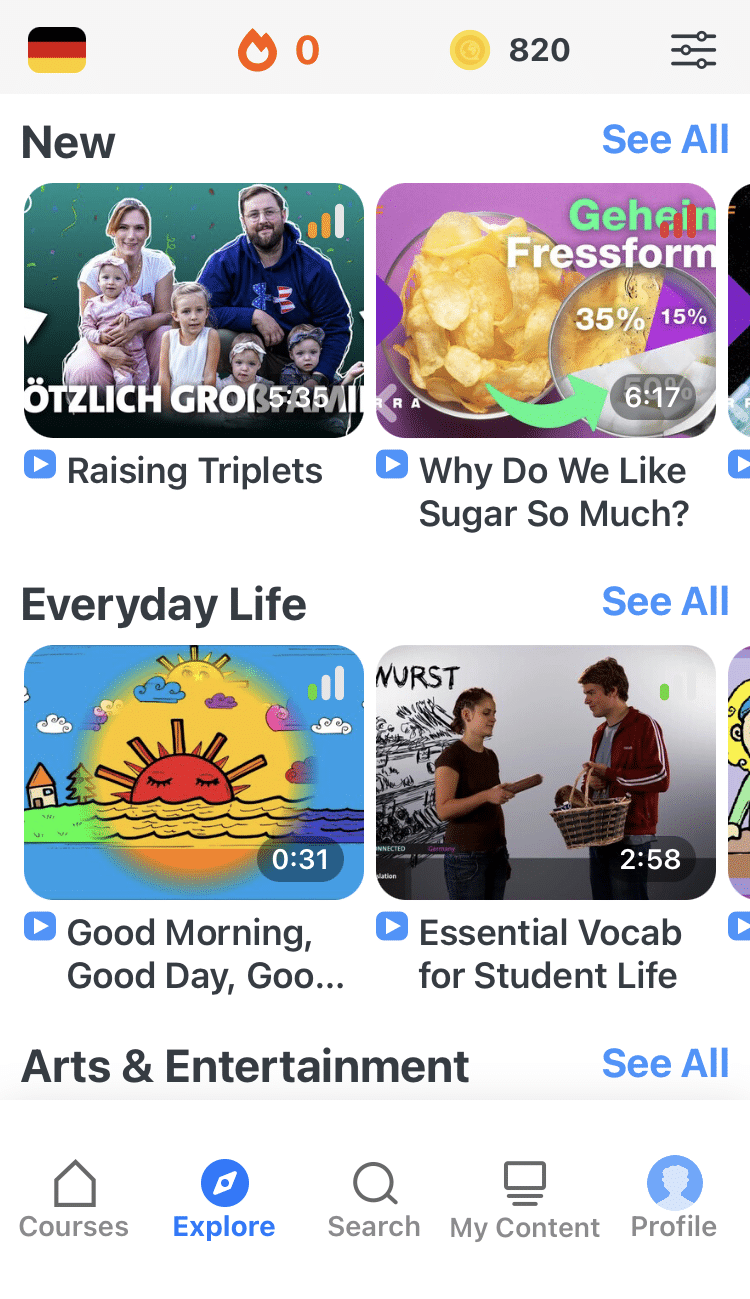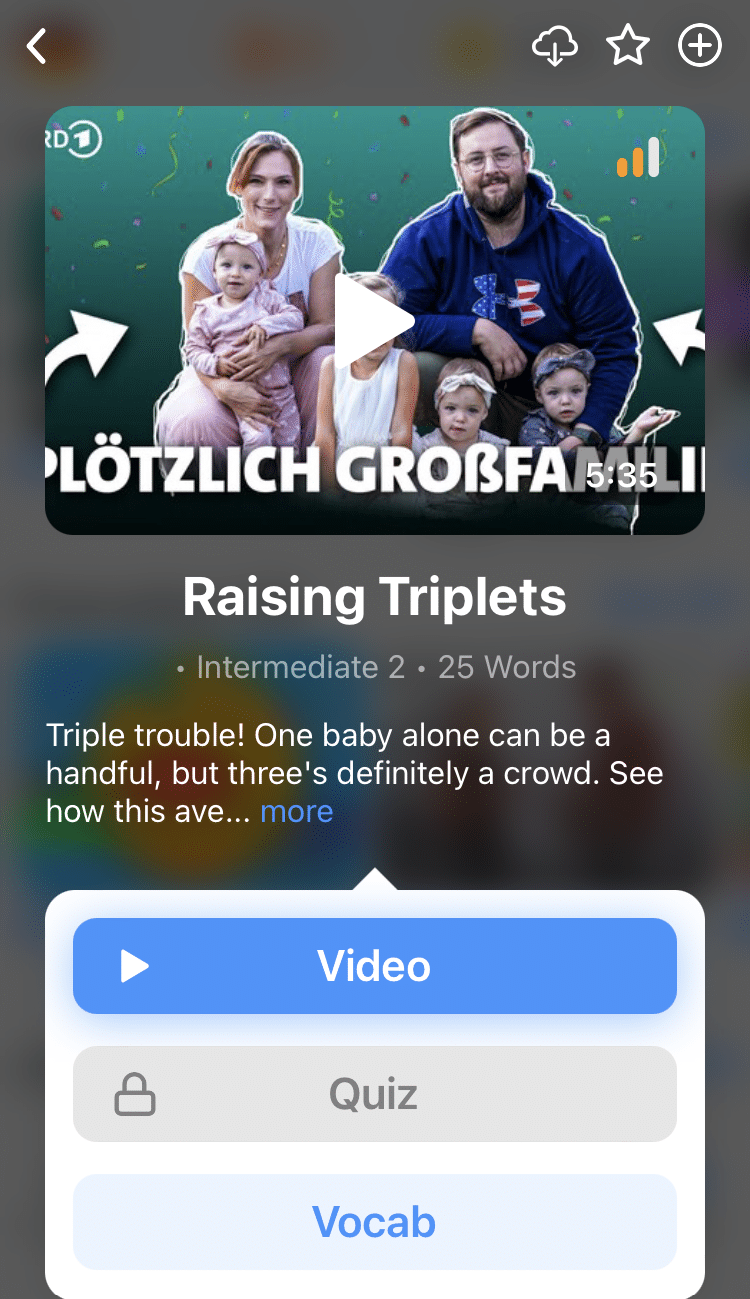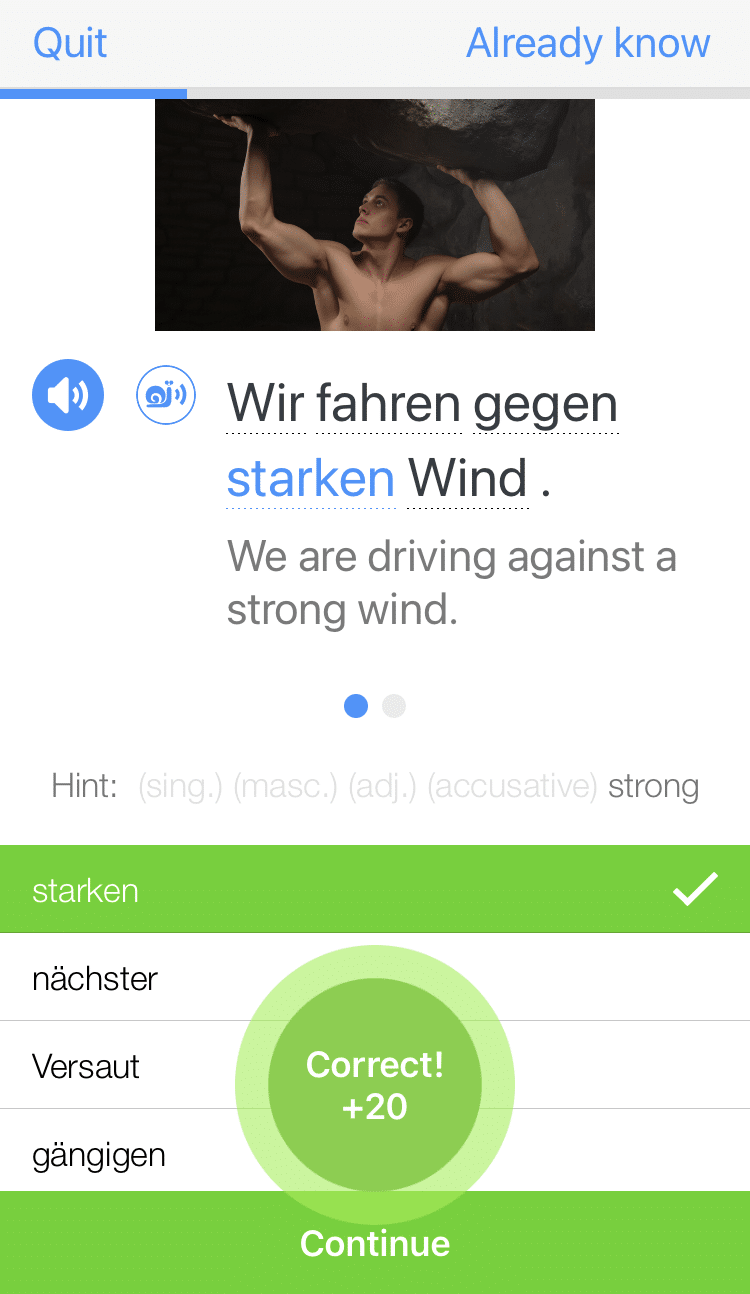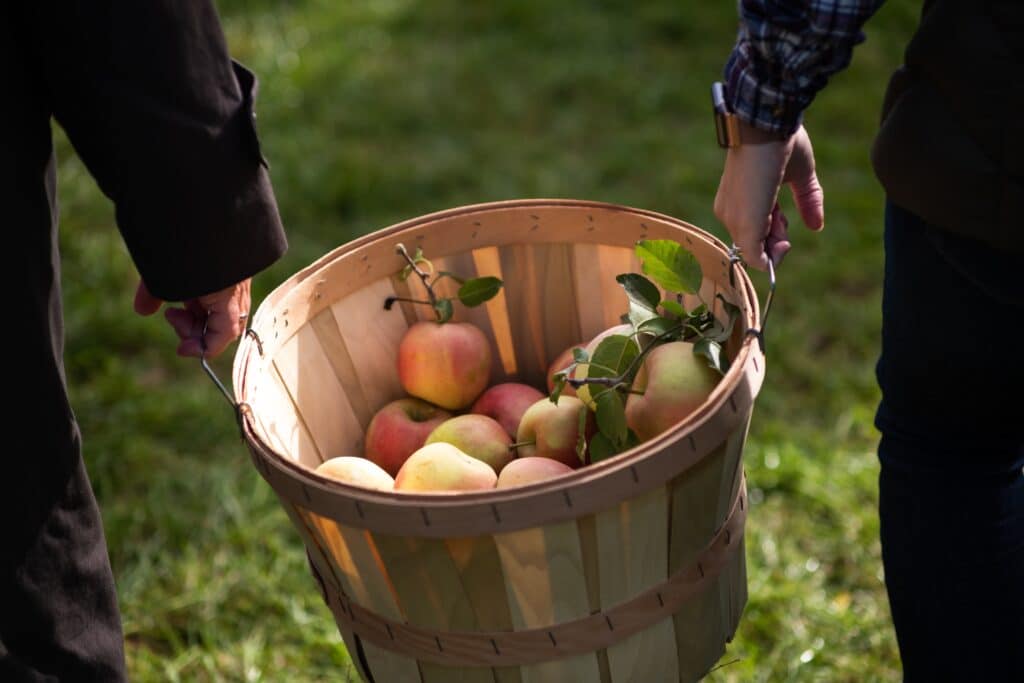
20 Fruits in German
Eating out or grocery shopping in German-speaking countries can be difficult if you don’t know much fruit-related vocabulary.
In this blog post, I’m going to teach you how to say 20 of the most commonly used fruits and six popular fruit dishes.
By the end, you’ll confidently be able to know what you’re eating and, more importantly, what you should try next.
Contents
- 1. der Apfel (Apple)
- 2. die Erdbeere (Strawberry)
- 3. die Blaubeere (Blueberry)
- 4. die Brombeere (Blackberry)
- 5. die Himbeere (Raspberry)
- 6. die Moosbeere (Cranberry)
- 7. die Kirsche (Cherry)
- 8. die Traube (Grape)
- 9. die Orange (Orange)
- 10. die Pflaume (Plum)
- 11. die Birne (Pear)
- 12. die Banane (Banana)
- 13. die Feige (Fig)
- 14. die Ananas (Pineapple)
- 15. der Pfirsich (Peach)
- 16. die Wassermelone (Watermelon)
- 17. die Zitrone (Lemon)
- 18. die Aprikose (Apricot)
- 19. der Granatapfel (Pomegranate)
- 20. die Kiwi (Kiwi)
- 6 German Fruit Dishes to Keep Your Eye Out For
- And One More Thing...
Download: This blog post is available as a convenient and portable PDF that you can take anywhere. Click here to get a copy. (Download)
1. der Apfel (Apple)
Plural: die Äpfel (apples)
Apples readily grow in central Europe. In fact, the best apple I’ve ever had was right off the tree in Kamenz, Saxony. They’re ready to harvest in early fall, so they’re a big part of holiday dishes.
You’ll also find the popular drink Apfelschorle in German-speaking countries—a carbonated beverage made from apple juice.
Example
Die Äpfel sind reif.
(The apples are ripe.)
2. die Erdbeere (Strawberry)
Plural: die Erdbeeren (strawberries)
If you’ve ever seen a strawberry plant, you know they grow across the ground, which is where their name comes from. Erdbeere literally means “earth berry.”
Example
Meine Tochter liebt Erdbeeren.
(My daughter loves strawberries.)
3. die Blaubeere (Blueberry)
Plural: die Blaubeeren (blueberries)
You can find both domestic and wild blueberries all across northern and central Europe.
Example
Im Sommer können wir Blaubeeren pflücken.
(In the summer, we can pick blueberries.)
4. die Brombeere (Blackberry)
Plural: die Brombeeren (blackberries)
Along with strawberries and blueberries, you’ll find wild blackberries growing in Germany’s temperate climate. Be careful, though: their prickles could cut your skin or clothes.
Example
Die Kinder sammeln wilde Brombeeren.
(The children are collecting wild blackberries.)
5. die Himbeere (Raspberry)
Plural: die Himbeeren (raspberries)
Raspberries are another berry that grows naturally in Germany.
Example
Ich könnte ein ganzes Kilogramm Himbeeren essen!
(I could eat a whole kilogram of raspberries!)
6. die Moosbeere (Cranberry)
Plural: die Moosbeeren (cranberries)
Technically, the word Moosbeere refers to the European cranberry. However, agricultural production of this variety is minimal.
Most cranberries consumed in Germany are imported from America. The technical name for these is Großfrüchtige Moosbeere, but most German speakers just refer to them as Moosbeeren.
Example
Moosbeeren sind mir zu sauer.
(Cranberries are too sour for me.)
7. die Kirsche (Cherry)
Plural: die Kirschen (cherries)
Along with apples, cherries are considered one of the most important fruits in German culture (sweet cherries being the most common variety). They grow in southern Germany, especially in Baden-Würtemberg.
Example
Ich setze eine Kirsche auf das Eis.
(I put a cherry on the ice cream.)
8. die Traube (Grape)
Plural: die Trauben (grapes)
Germany has a very fertile wine country in the west. Plus, its neighboring countries Austria and Switzerland are also known for their vineyards. Popular German grape varieties include Gewürztraminer and Riesling .
Example
Das Baby mampft Trauben.
(The baby is munching on grapes.)
9. die Orange (Orange)
Plural: die Orangen (oranges)
Germany is too cold to grow oranges, but that doesn’t stop local Germans from eating them. They eat oranges plain and use the juice and peel to flavor dishes.
Example
Diese Orange hat eine dicke Schale.
(This orange has a thick peel.)
10. die Pflaume (Plum)
Plural: die Pflaumen (plums)
Plums grow wild in many parts of Germany, with their sweet flavor and refreshing texture making them popular.
Example
Bitte nimm die Pflaumen aus dem Kühlschrank.
(Please take the plums out of the fridge.)
11. die Birne (Pear)
Plural: die Birnen (pears)
Like apples, pears grow easily in Germany and play an important role in its culture.
Example
Ich schneide die Birne in kleine Stücke.
(I cut the pear into small pieces.)
12. die Banane (Banana)
Plural: die Bananen (bananas)
Bananas don’t grow in Germany. However, since they’re one of the most popular fruits in the world and are easy to store, you’ll inevitably find them in supermarkets and restaurants.
Example
Nimm dir eine Banane mit.
(Take a banana with you.)
13. die Feige (Fig)
Plural: die Feigen (figs)
You’ll find these delicious fruits both fresh and dried throughout Germany, Austria and Switzerland.
Example
Mein Opa bevorzugt getrocknete Feigen.
(My grandpa prefers dried figs.)
14. die Ananas (Pineapple)
Plural: die Ananas (pineapples)
Of course, pineapples are tropical fruits, so you aren’t going to find them growing wild in German-speaking countries. You can still get them at most supermarkets, though.
Example
Du bist verrückt, wenn du Ananas auf Pizza magst.
(You’re crazy if you like pineapple on pizza.)
15. der Pfirsich (Peach)
Plural: die Pfirsiche (peaches)
Peach trees prefer warmer weather than Germany has to offer. As a result, German speakers usually import them from neighbors like Italy and Spain.
Example
Pfirsiche haben eine pelzige Haut.
(Peaches have a furry skin.)
16. die Wassermelone (Watermelon)
Plural: die Wassermelonen (watermelons)
The name for this giant fruit is almost the same in English, reflecting its juicy nature.
Example
Diese Wassermelone ist so erfrischend!
(This watermelon is so refreshing!)
17. die Zitrone (Lemon)
Plural: die Zitronen (lemons)
To remember the word for lemons, just think of the word “citrus.”
Example
Ich möchte einen Zitronenbaum in meinem Garten pflanzen.
(I want to plant a lemon tree in my backyard.)
18. die Aprikose (Apricot)
Plural: die Aprikosen (apricots)
You might find dried pieces of this fruit in Müsli (similar to granola) or Studentenfutter (a kind of trail mix).
Example
Mama macht Marmelade mit den Aprikosen aus dem Garten.
(Mom makes jam with the apricots from the garden.)
19. der Granatapfel (Pomegranate)
Plural: die Granatäpfel (pomegranates)
Pomegranates don’t do well in Germany’s temperate climate. But when in season, you can find them in the store.
Example
Ich mache einen Salat mit Ziegenkäse, Rucola und Granatapfelkerne.
(I’m making a salad with goat’s cheese, rocket and pomegranate seeds.)
20. die Kiwi (Kiwi)
Plural: die Kiwis (kiwis)
Kiwis might not grow in Germany, but the natives still like using them for desserts and cocktails.
Example
Mein Bruder ist allergisch gegen Kiwis.
(My brother is allergic to kiwis.)
6 German Fruit Dishes to Keep Your Eye Out For
Traditionally, German speakers ate fruits that grew in the temperate climate of their country. Today, these fruits are still what you’ll see growing in gardens or at the local farmers’ market.
Of course, in a modern German grocery store, you’ll also find fruit from around the world. German-speaking countries import fruit from many different climates these days, and these fruits have also become integrated into the daily diets of German people
You can actually notice this even in German media like movies and vlogs, where you might spot German fruits and fruit-based dishes. The German videos on FluentU can also fill you in on more German cultural tidbits and vocabulary,
FluentU takes authentic videos—like music videos, movie trailers, news and inspiring talks—and turns them into personalized language learning lessons.
You can try FluentU for free for 2 weeks. Check out the website or download the iOS app or Android app.
P.S. Click here to take advantage of our current sale! (Expires at the end of this month.)
Now that you know the names of 20 common fruits in German, let’s take a look at six popular German fruit dishes you’re likely to experience in a German-speaking country.
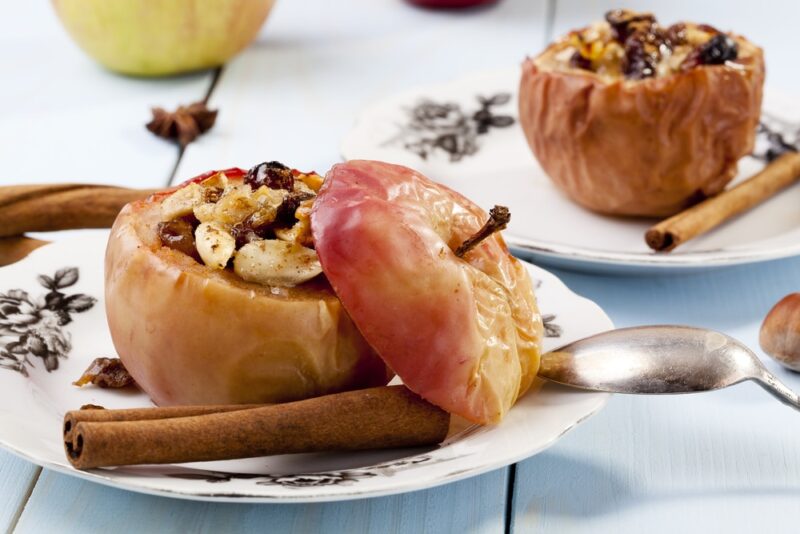
As the name suggests, this dish is made from roasted apples.
The apples are hollowed out and then filled with sugar, spices and sometimes jam. Since apples are harvested in the fall, this is a common winter dessert, especially around the holidays.

Even though it bears the name of the German capital, this dish is actually a traditional Austrian pastry. It’s made of a sweet dough filled with strawberry, raspberry, plum or cherry jam and resembles a donut.
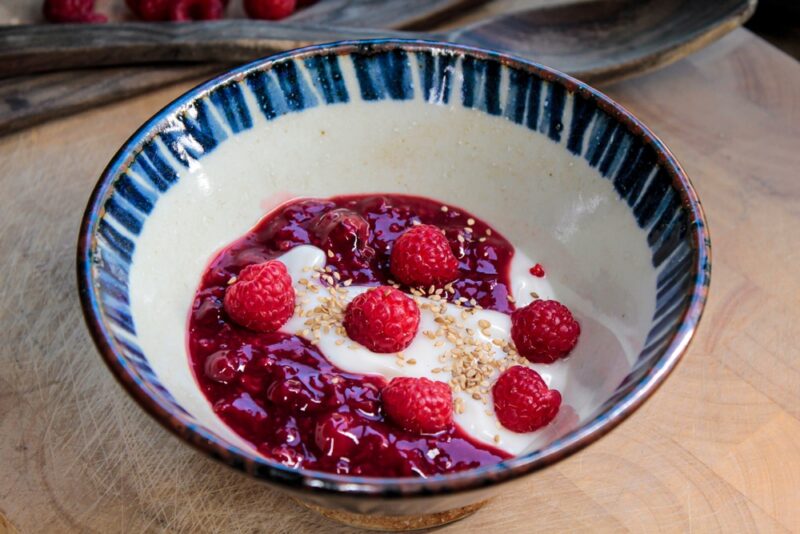
This dish combines many of the most common fruits in German-speaking countries.
It’s made from cherries, blackberries, strawberries and raspberries. The fruits are cooked with starch to create a pudding-like substance, and you can eat it with milk or cream. Yum!
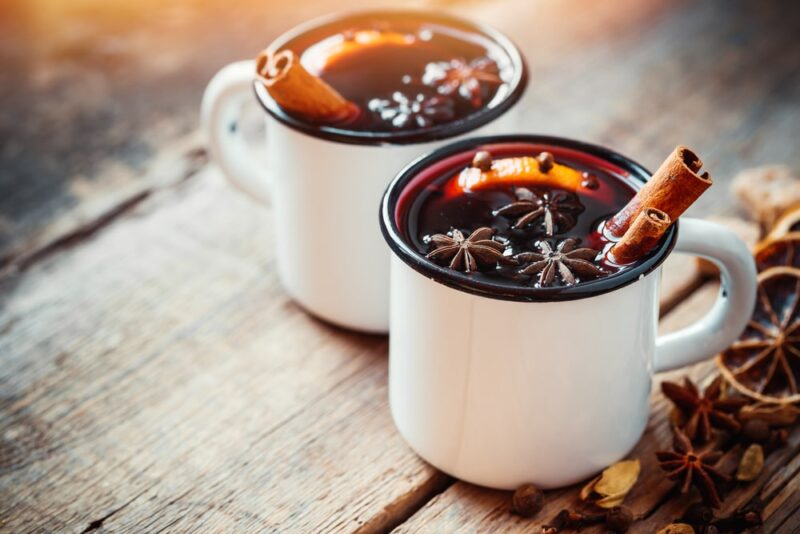
Glühwein means mulled wine. It’s made some of my best memories living in Germany, and I know I’m not alone.
This drink is famous for its popularity at the Weihnachtsmärkte (Christmas markets) in Germany, Austria and Alsace.
Red and sometimes white wine is heated and mixed with fruit and spices, keeping you warm as you explore the markets.

For an English speaker, Stollen is similar to fruitcake. Made of dried fruit and orange peel, it’s common in Bremen and traditionally eaten at Christmas.
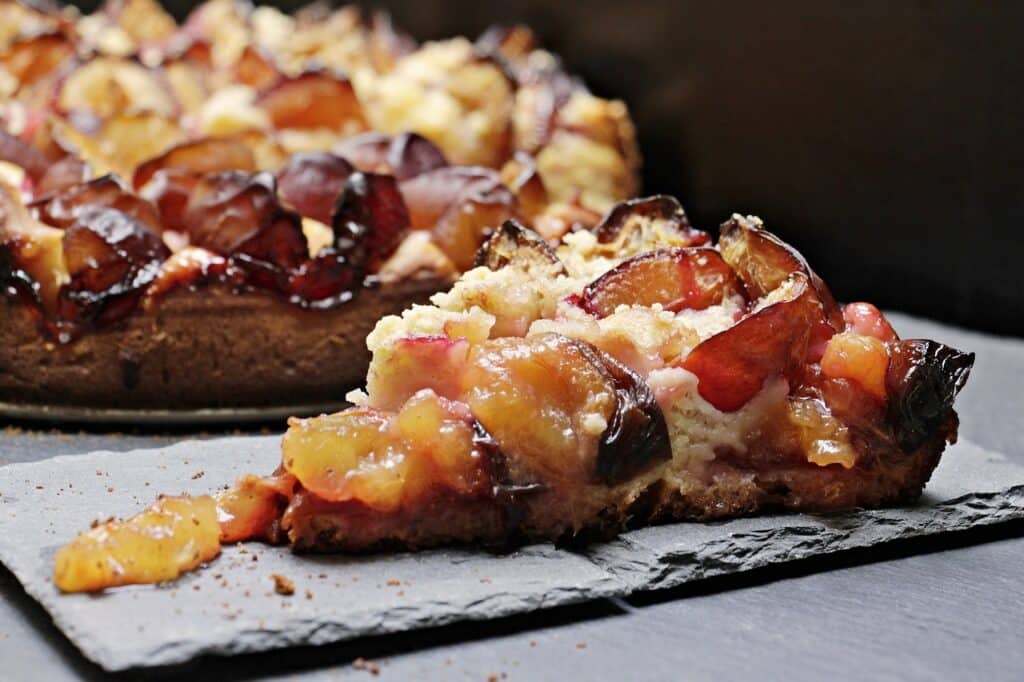
If you looked closely at the name, you’ll see it literally means “plum cake.”
This is a simple pastry made from a crust covered with plums. It’s popular in Germany, Austria and Switzerland, and is often served as a dessert after big events or dinners.
Now you know all the fruits you’d see in the grocery store or growing beside the road. Not only that, you know the names of common fruit-based dishes and can figure out the ingredients of many more you see advertised in bakeries and restaurants.
It’s clear what you have to do with this new knowledge: Get out there and try some new things! Practice speaking with your local baker or grocer, and you just might discover your new favorite dessert.
Download: This blog post is available as a convenient and portable PDF that you can take anywhere. Click here to get a copy. (Download)
And One More Thing...
Want to know the key to learning German effectively?
It's using the right content and tools, like FluentU has to offer! Browse hundreds of videos, take endless quizzes and master the German language faster than you've ever imagine!
Watching a fun video, but having trouble understanding it? FluentU brings native videos within reach with interactive subtitles.
You can tap on any word to look it up instantly. Every definition has examples that have been written to help you understand how the word is used. If you see an interesting word you don't know, you can add it to a vocabulary list.
And FluentU isn't just for watching videos. It's a complete platform for learning. It's designed to effectively teach you all the vocabulary from any video. Swipe left or right to see more examples of the word you're on.
The best part is that FluentU keeps track of the vocabulary that you're learning, and gives you extra practice with difficult words. It'll even remind you when it’s time to review what you’ve learned.
Start using the FluentU website on your computer or tablet or, better yet, download the FluentU app from the iTunes or Google Play store. Click here to take advantage of our current sale! (Expires at the end of this month.)

